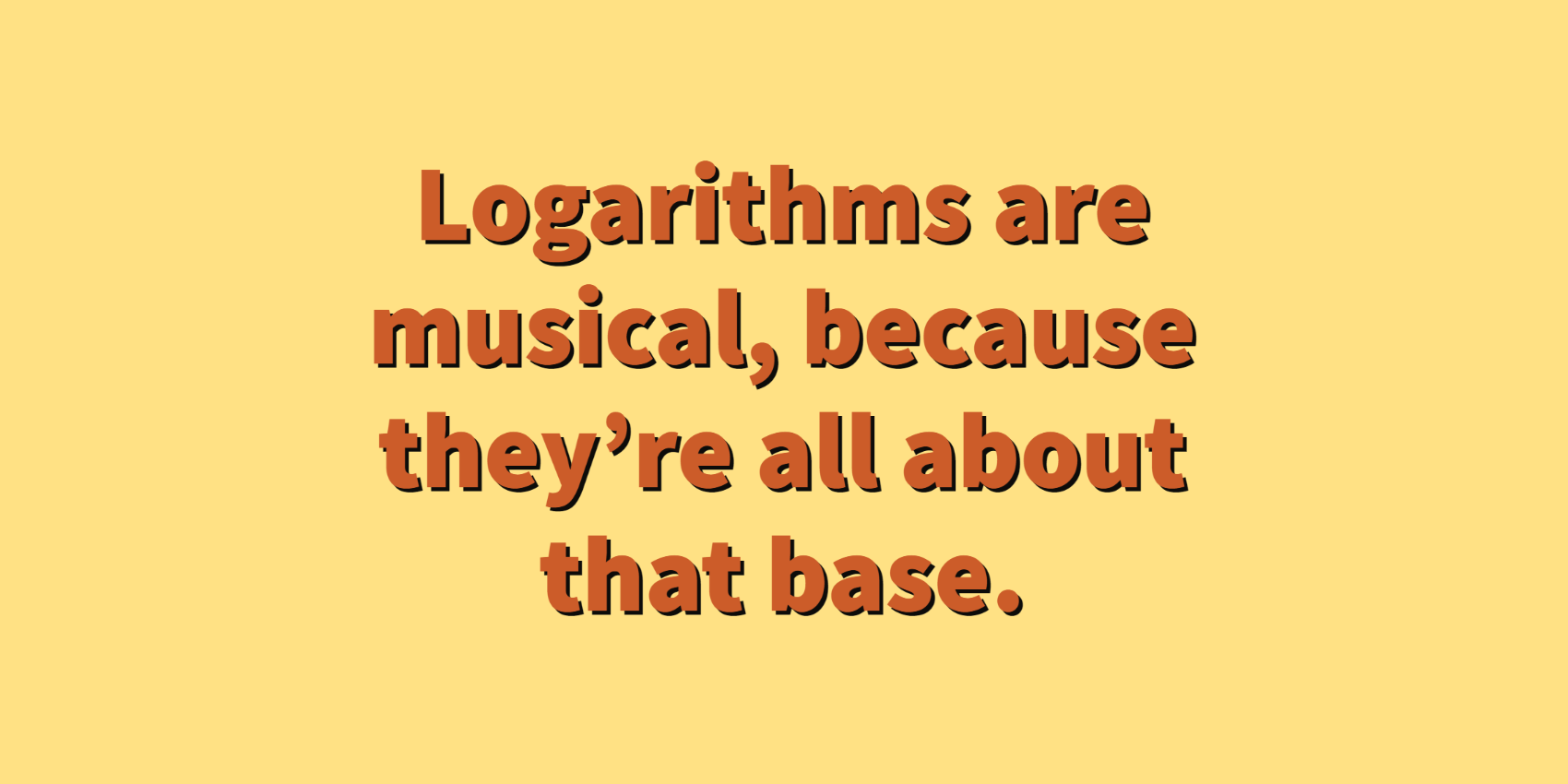Address
304 North Cardinal St.
Dorchester Center, MA 02124
Work Hours
Monday to Friday: 7AM - 7PM
Weekend: 10AM - 5PM
Address
304 North Cardinal St.
Dorchester Center, MA 02124
Work Hours
Monday to Friday: 7AM - 7PM
Weekend: 10AM - 5PM

Resolva os seguintes sistemas de equações:
A estratégia é similar à resolução de sistemas sem logaritmos: manipular algebricamente as expressões, com o objetivo de simplificar as equações, isolar uma das variáveis numa das expressões e substituí-la na outra expressão.
Mas quando o sistema envolve logaritmos, devemos ficar atentos às oportunidades de empregar as propriedades de logaritmos ao longo do processo de manipulação das equações. Além disso, é preciso tomar sempre cuidado com as condições de existência do logaritmo:
\text{Se } a, b \in \mathbb{R}, 0 \lt a\ne 1 \text{ e } b\gt 0 \text{, então:} \\
\enspace \\
\log_a b = x \Leftrightarrow a^x = bAssim é sempre necessário validar as soluções obtidas quanto às condições acima. Isto é, nossas soluções têm que resultar em logaritmos “viáveis”.
Partindo do sistema original, temos:
\begin{cases}
x + y = 6 \Rightarrow y = 6 - x \\
\log_2 x + \log_2 y = \log_2 8 \Rightarrow \log_2 {xy} = \log_2 8 \Rightarrow xy = 8
\end{cases} \\
\enspace \\
\text{Substituindo a primeira equação na segunda, temos:} \\
\enspace \\
x(6 - x) = 8 \Rightarrow 6x - x^2 = 8 \Rightarrow x^2 - 6x + 8 = 0
\enspace \\
\Delta = (-6)^2 - 4 \cdot 1 \cdot 8 = 36 - 32 = 4 \\
\enspace \\
x = \frac{-(-6) \pm \sqrt{4}}{2 \cdot 1} = \frac{6 \pm 2}{2}\\
\enspace \\
x_1 = 4 \Rightarrow y_1 = 6 - 4 = 2 \\
x_2 = 2 \Rightarrow y_2 = 6 - 2 = 4Como x_1, y_1, x_2 \text{ e } y_2 \gt 0 , todas as soluções são viáveis.
Partindo do sistema original, temos:
\begin{cases}
4^{x-y} = 8 \Rightarrow 2^{2(x-y)} = 2^3 \Rightarrow 2(x - y) = 3 \\
\log_2 x - \log_2 y = 2 \Rightarrow \log_2 {\dfrac{x}{y}} = 2 \Rightarrow \dfrac{x}{y} = 2^2 = 4
\end{cases}Da segunda equação temos x = 4y e substituindo essa variável na primeira equação, temos:
2(x - y) = 3 \Rightarrow 2(4y - y) = 3 \Rightarrow 2(3y) = 3 \Rightarrow y = \frac{1}{2} \\
x = 4y = 4 \cdot \frac{1}{2} = 2 \\
\enspace \\
\therefore S = \left \{ \left( 2, \frac{1}{2} \right) \right \}Partindo do sistema original, temos:
\begin{cases}
x^2 + y^2 = 425 = 5^2 \cdot 17 \\
\log x + \log y = 2 \Rightarrow \log xy = 2 \Rightarrow xy = 10^2 = 100= 5^2 \cdot 2^2
\end{cases}Da segunda expressão, temos y = \dfrac{5^2 \cdot 2^2}{x} , assim, substituindo este valor na primeira expressão, obtemos:
x^2 + \left( \frac{5^2 \cdot 2^2}{x} \right)^2 = 5^2 \cdot 17 \Rightarrow \\
\enspace \\
x^2 + \frac{5^4 \cdot 2^4}{x^2} = 5^2 \cdot 17 \Rightarrow \\
\enspace \\
\frac{x^4 +5^4 \cdot 2^4}{x^2} = 5^2 \cdot 17 \Rightarrow \\
\enspace \\
x^4 +5^4 \cdot 2^4 = x^2 (5^2 \cdot 17) \Rightarrow \\
\enspace \\
x^4 - (5^2 \cdot 17)x^2 + 5^4 \cdot 2^4 = 0 Fazendo x^2 = a , temos:
a^2 - (5^2 \cdot 17)a + 5^4 \cdot 2^4 = 0 \\
\enspace \\
\Delta = (- (5^2 \cdot 17))^2 - 4 \cdot 1 \cdot 5^4 \cdot 2^4 = 5^4 \cdot 17^2 - 5^4 \cdot 2^6 \Rightarrow \\
\enspace \\
\Delta = (17^2 - 2^6) \cdot 5^4 = 225 \cdot 5^4 = 5^2 \cdot 3^2 \cdot 5^4 \\
\enspace \\
a = \frac{(5^2 \cdot 17) \pm \sqrt{5^2 \cdot 3^2 \cdot 5^4}}{2 \cdot 1} = \frac{(5^2 \cdot 17) \pm 5 \cdot 3 \cdot 5^2}{2} = \frac{425 \pm 375 }{2} \\
\enspace \\
a_1 = \frac{800}{2} = 400 = x_1^2 \Rightarrow x_1 = \sqrt{400} = \pm 20 \\
\enspace \\
a_1 = \frac{50}{2} = 25 = x_2^2 \Rightarrow x_2 = \sqrt{25} = \pm 5Mas x \lt 0 não convém, portanto são válidas apenas as soluções positivas e:
x_1 = 20 \Rightarrow y_1 = \frac{100}{x_1} = \frac{100}{20} = 5 > 0 \\
\enspace \\
x_2 = 5 \Rightarrow y_2 = \frac{100}{x_2} = \frac{100}{5} = 20 > 0 \\
\enspace \\
\therefore S = \left \{ (20, 5); (5, 20) \right \}Partindo do sistema original, temos:
\begin{cases}
2^{\sqrt{x} + \sqrt{y}} = 512 = 2^9 \Rightarrow \sqrt{x} + \sqrt{y} = 9 \\
\log \sqrt{xy} = 1 + \log 2 = \log 10 + \log 2 = \log 10 \cdot 2 = \log 20
\end{cases} \\
\enspace \\
\text{Da segunda equação, temos:} \\
\enspace \\
\sqrt {x} \cdot \sqrt{y} = 20 \Rightarrow \sqrt {x} = \frac{20}{\sqrt {y}} \\
\enspace \\
\text{Substituindo na primeira equação, temos:} \\
\enspace \\
\sqrt{x} + \sqrt{y} = 9 \\
\enspace \\
\frac{20}{\sqrt {y}} + \sqrt{y} = 9 \Rightarrow \frac{20 + y}{\sqrt {y}} = 9 \Rightarrow 20 + y = 9 \sqrt{y} \Rightarrow \\
\enspace \\
y - 9 \sqrt{y} + 20 = 0Fazendo \sqrt{y} = a , temos:
y - 9 \sqrt{y} + 20 = 0 \Rightarrow a^2 - 9a + 20 = 0 \\
\enspace \\
\Delta = (-9)^2 + 4 \cdot 1 \cdot 20 = 81 - 80 = 1 \\
\enspace \\
a =